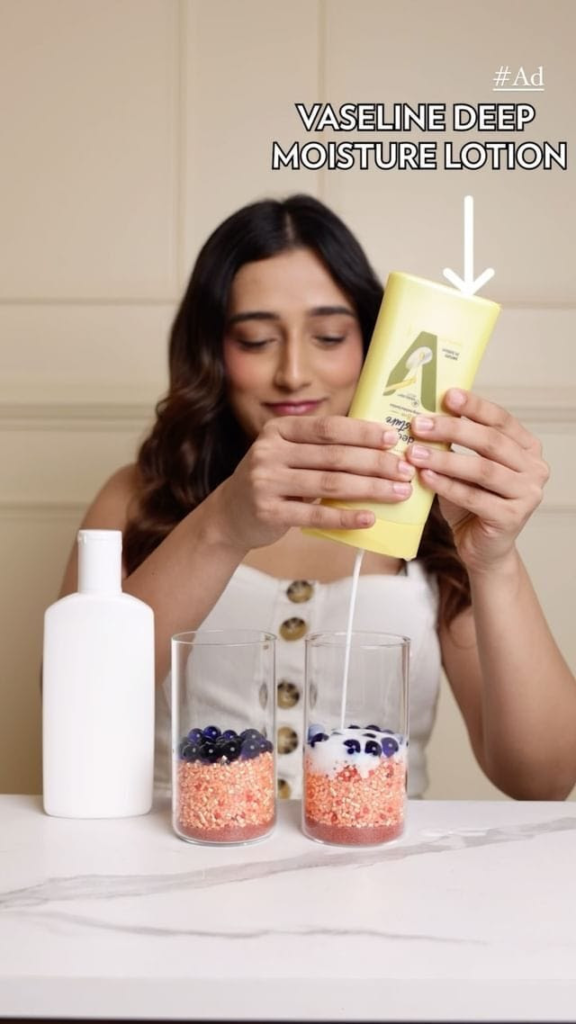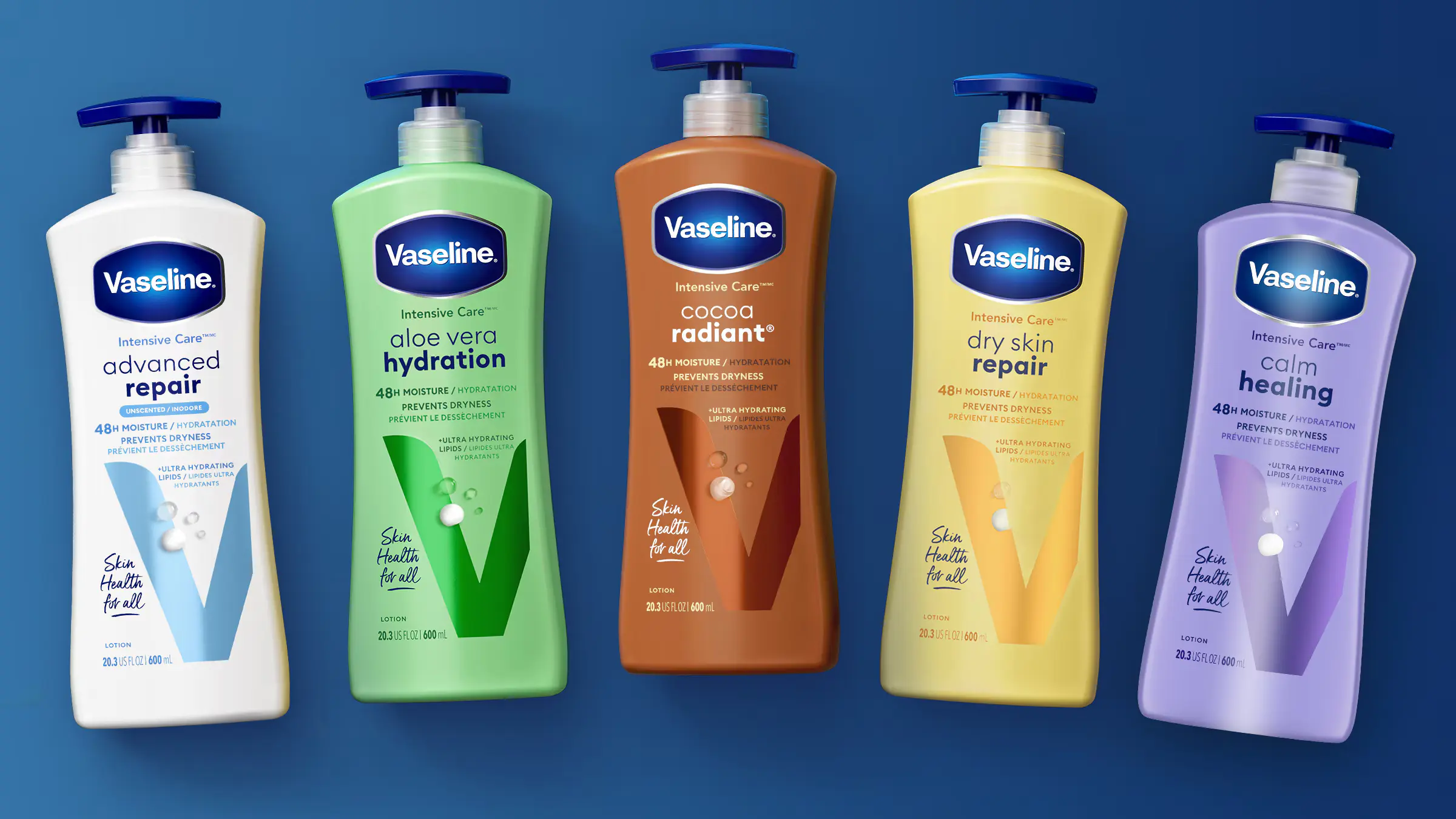As winter and dryness approaches, many Indian households will go back to using Vaseline. What began as a humble petroleum jelly in 1870 has evolved into a global skincare giant, offering a variety of products aimed at soothing, moisturizing, and protecting the skin. Today, we’ll explore how Vaseline has maintained its iconic status and deepened its reach into markets worldwide.
Vaseline’s story starts with Robert Chesebrough, a chemist who discovered petroleum jelly while working in Pennsylvania’s oil fields. After refining the substance, he launched it as “Vaseline” in 1870. Within a few short years, Vaseline had become a staple in American households, thanks to its versatile applications ranging from treating burns to diaper rashes.
| Did you know? By 1875, Vaseline was sold at the rate of a jar a minute in America.During wars, Vaseline was a staple for soldiers to soothe sore feet – many troops would write to their families to send more! |
The brand’s core remains its healing jelly, a product that has stood the test of time for over 150 years. But it’s also made a global presence with a vast product line, all focused on healing the skin.
Market Entry in India
Vaseline entered the Indian market in 1947. Today, India is the second-biggest market for Vaseline.

Early campaigns focused heavily on building trust, positioning Vaseline as a must-have household product, particularly during the colder months. Recognizing India’s tropical climate and diverse skin needs, Vaseline quickly adapted its product offerings.
Vaseline’s packaging also became more localized, with various sizes catering to different consumer budgets, ensuring its accessibility in a price-sensitive market like India. Over time, the brand became embedded in Indian households, earning the trust of millions who sought affordable, reliable skincare solutions.
STP & SWOT Analysis
Segmentation:
Demographically, it appeals to a broad spectrum – everyone from children to the elderly. Its gender-neutral products like petroleum jelly and lotions make it versatile, appealing to all genders.
The brand’s affordable price point makes it accessible across income groups, from high-income individuals looking for reliable products to price-sensitive consumers in emerging markets. Geographically, Vaseline is present in both urban and rural areas, but its appeal in rural regions is noteworthy.
Families, particularly mothers, are key users, as Vaseline is often considered a go-to for treating minor skin issues for children and adults alike.
Targeting:
Vaseline’s marketing is primarily broad-based, aiming at a mass market, but it also tailors specific campaigns to appeal to certain demographics. For instance, the brand often runs campaigns targeted at women and mothers, emphasizing its ability to care for the whole family.
Positioning:
Vaseline has masterfully positioned itself as a trusted, affordable, and versatile skincare solution. Known for its healing and protective properties, Vaseline has built a reputation for being a household essential. Whether it’s for daily moisturization, minor injuries, or first-aid, Vaseline is a reliable, multi-purpose product.
It’s not just a skincare brand – it’s considered a necessity for daily care and first aid, solidifying its place in households.
Strengths:
- Global Brand Reputation:
With over 150 years of experience, Vaseline is a well-established, globally trusted brand. Its strong reputation gives it an edge in competitive markets.
- Affordable Price Point:
One of Vaseline’s biggest strengths is its affordability, making it accessible to both premium and budget-conscious consumers.
- Versatile Product Range:
While petroleum jelly remains its cornerstone, Vaseline has expanded into lip care, body lotions, and moisturizers.
- Rural Market Reach:
Vaseline is well-known and trusted in rural areas, thanks to its affordability and versatility, making it an integral part of household skincare routines.
Weaknesses:
- Perception of Being “Old-fashioned”:
Despite its global success, some segments of the population perceive Vaseline as an outdated product, primarily due to its reliance on petroleum jelly.
- Limited Innovation:
While Vaseline has expanded its product line, there is a perception that it is less innovative compared to other skincare brands that frequently introduce new, cutting-edge products.
Opportunities:
- Expansion into Newer Segments:
The brand could explore new formulations that meet the increasing preference for eco-friendly, organic skincare products.
Threats:
- Intense Competition:
Global brands like Nivea and Dove also vie for market share in the affordable skincare segment.
- Shift Towards Natural/Organic Products:
As consumers become more aware of ingredients, brands that offer more eco-friendly alternatives may gain an edge.
Marketing Mix (4Ps) of Vaseline
Product:
Vaseline’s core product is its iconic Petroleum Jelly, which has been a staple in households worldwide for over a century. However, the brand has significantly diversified its offerings, and the product range now includes body lotions, lip care products, and specialized solutions like healing ointments designed for intense skincare needs.
In India, Vaseline’s innovation is reflected in its product adaptations. For example, their Vaseline Intensive Care Deep Restore Body Lotion specifically targets consumers with dry skin, a common issue in regions with extreme weather conditions.
Currently, the trend in skincare industry is leaning towards science-based functional products. So, Vaseline has introduced Gluta-Hya, a serum-in-lotion. This product innovation keeps them relevant.
Price:
Vaseline’s pricing strategy focuses on offering affordable products while still maintaining a perception of quality and value for money. This approach ensures that their products cater to a wide audience, from rural, price-sensitive consumers to those looking for premium skincare solutions.
Vaseline uses value-based pricing, where the size of the product and its target audience influence the price. For instance, small-sized petroleum jelly jars are sold at lower prices in rural areas, while larger lotion bottles are priced higher, targeting more affluent urban customers.
This tiered approach helps Vaseline maintain market accessibility while appealing to different income levels.
Place:
Vaseline’s distribution network is vast, reaching both traditional retail outlets and pharmacies, as well as modern trade stores. In India, its products are commonly found in grocery stores, pharmacies, and major retailers like Big Bazaar.
The brand has also embraced e-commerce platforms such as Amazon, Flipkart, and Nykaa, where consumers can easily purchase its full range of products online. This omnichannel presence helps Vaseline maintain consistent availability across urban and rural markets.
Today, Vaseline is sold in more than 70 countries, including key markets like the U.S., UK, India, and Africa.
Promotion:
Vaseline’s campaigns often focus on how a simple product can solve multiple skin issues. Considering the power of traditional media, the brand runs extensive TV and print ads, especially during the winter season when dry skin is a prevalent issue, making its body lotions and healing balms more relevant.

Ass an established brand, Vaseline has moved towards a commitment to healing skin issues on a global scale, especially for people who cannot afford expensive skincare but still need it.
So, they created a purpose-driven campaign – The Vaseline Healing Project.
It has partnered with Direct Relief and other organizations to make skincare health accessible and train dermatologists for treatment of people of color.
By tying their product to social good, Vaseline establishes an emotional connection with its consumers, positioning itself not only as a skincare brand but as a force for positive change. Vaseline runs intense campaigns focusing on the healing properties of its body lotions, particularly in regions like North India, where dry and cold conditions increase demand for skin moisturizers.
For instance, often, multiple products are used for different problems, like chapping of lips, cracking of heels, and dryness of skin. But this ad shows how Vaseline can solve them all –
Vaseline is not only for multipurpose use but also for people across age groups – this old ad aimed to capture that:
To appeal to today’s youth, Vaseline also came up with this quirky music video:
The brand is also active on social media. vaselineindia has 80.1K followers on Instagram.
There are 2 major content pillars:
They use influencer marketing to reach a broad audience:

They use product showcases in reels, posts, and carousels.
This helps them keep in touch with today’s audience as it continues to evolve in both its product offerings and marketing approaches.
In a Nutshell
Vaseline’s brand longevity is built on a foundation of trust, product versatility, and affordable skincare solutions. Over the years, the brand has successfully evolved from its original petroleum jelly offering to a diversified product line that caters to changing consumer preferences, particularly in markets like India.
With the rise of organic and natural skincare trends, Vaseline could benefit from expanding its product range to include eco-friendly ingredients.
Key Takeaways from Vaseline’s Marketing
- Product Versatility and Consumer Education:
Vaseline’s success lies in its ability to market its products as multi-purpose solutions. Teaching consumers about the various ways to use the product can help to boost sales.
- Traditional + Digital Channels:
Vaseline has used newspapers, ad films and social media channels to stay in touch with the consumers.
- Storytelling and Cause-Driven Marketing:
Campaigns like the Healing Project not only promote the product but also create an emotional connection with consumers, showing the power of cause-based marketing to build long-lasting brand loyalty.


